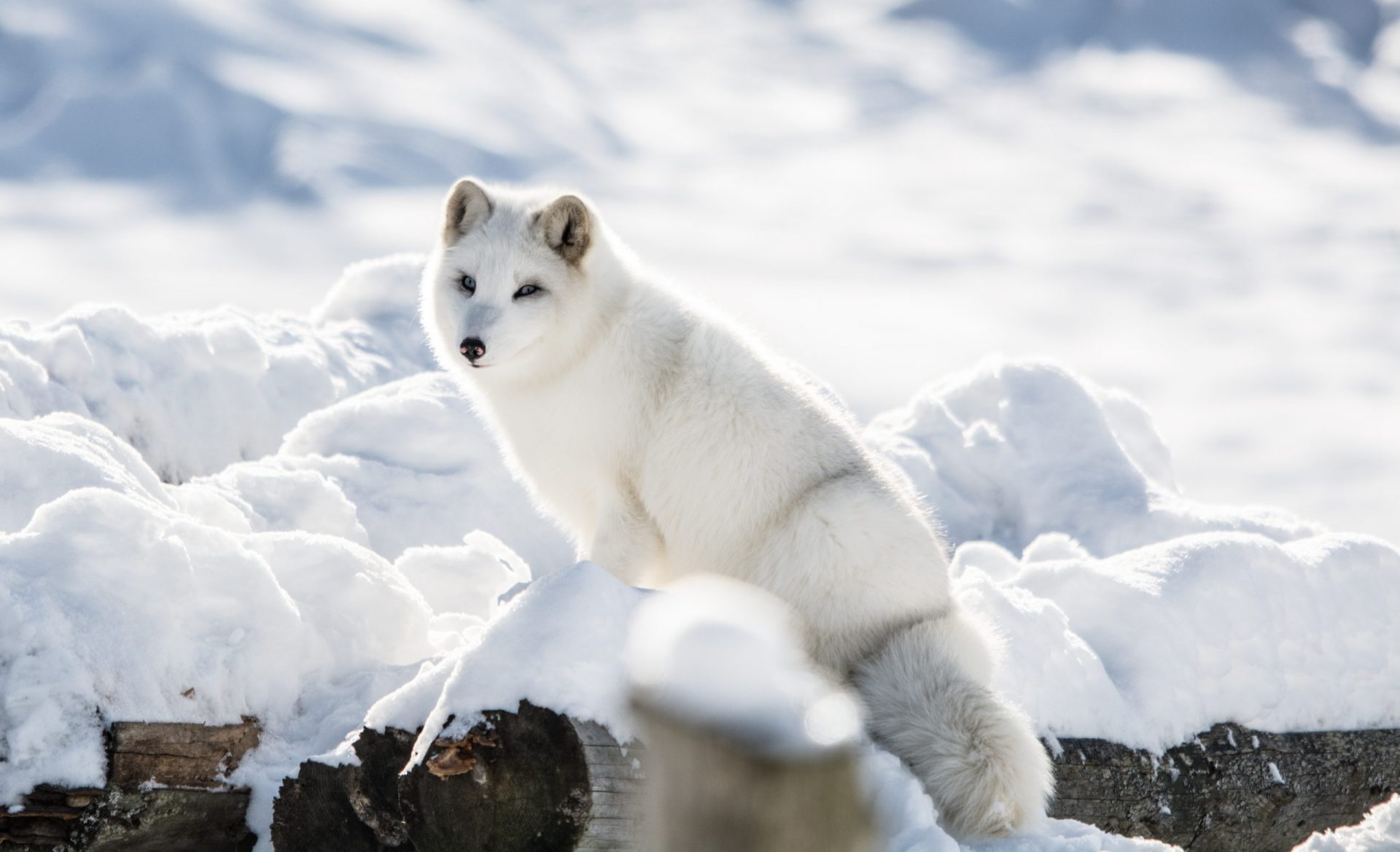Install MyStart Theme for Google Chrome
The arctic fox can be found in the entire tundra of the Arctic region in Canada, Greenland, Russia, Norway, Alaska, Scandinavia and Iceland.
It is a remarkably resilient creature that can even survive extreme temperatures such as -58°F.
It has short ears and muzzles, as well as furry soles. These features help it adapt to cold climates. They use the furry soles and short muzzle to burrow into the snow to create shelter against blizzards and cold air.
They have really gorgeous white coats that provide them camouflage in the snow and ice. Sometimes they also have blue-gray hues which help them blend easily to protect them from predators. The most interesting thing is that their coat changes color when the seasons change. It goes gray or brown to blend into the rocks or plants of the tundra. The thick tail of the fox helps them balance, but the primary advantage of the tail is a warm cover against cold winds.
The camouflage helps them find prey like fish, birds, or rodents. Their front-facing, wide ears aid their amazing hearing abilities. This helps them detect the exact position of their prey beneath layers of the snow. They leap and jump right on the location of the prey and use their furry paws to quickly dig them out. Their diet staple consists of lemmings. The population of these foxes can shift depending on the population of lemmings.

However, ground prey like that is really hard to come by in the harsh winters. The clever creatures follow the area’s biggest predator, the polar bear, to eat the leftovers from their prey. On occasion, they also eat vegetables if they are available.
They mate for life and raise their pups together as a unit. They can birth around 5 to 20 pups and large litters are really common. They stick together to help them survive the harsh climate and lack of food together. In the wild, they can live up to 3 years; in captivity, they can last for ten years.
They aren’t endangered species, but their numbers did begin to dwindle for some time due to hunting activities. With pressure, these were stopped to save the numbers of these amazing creatures.
Install MyStart Theme for Google Chrome










